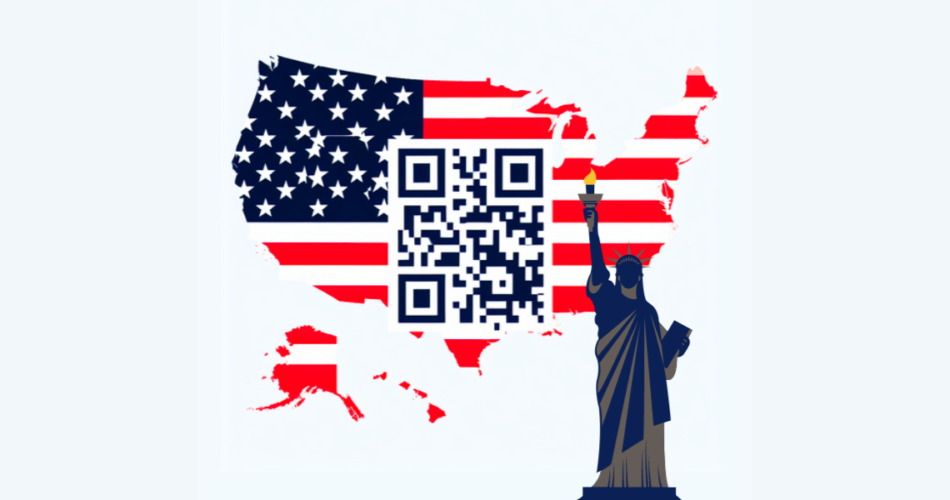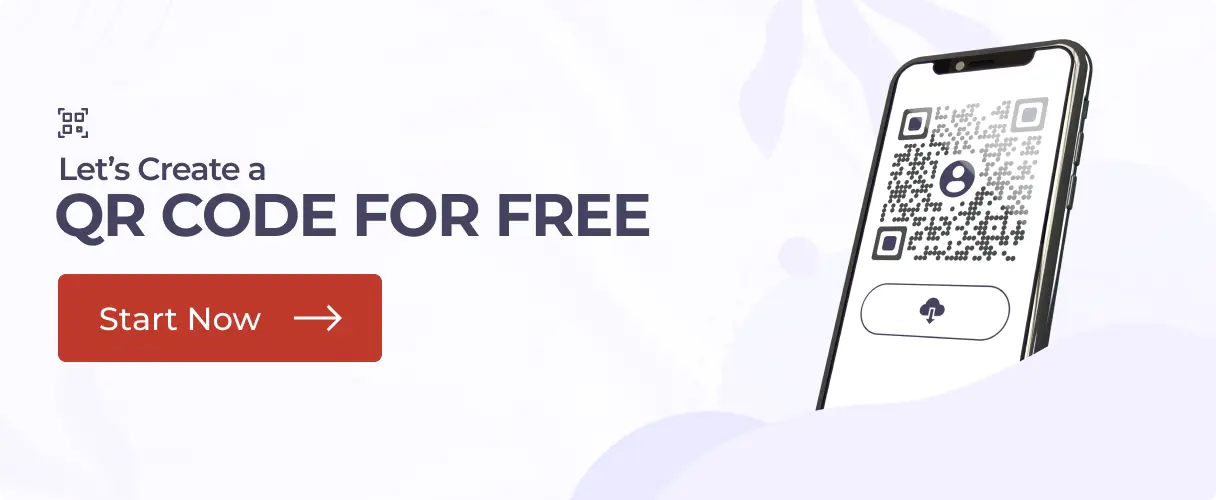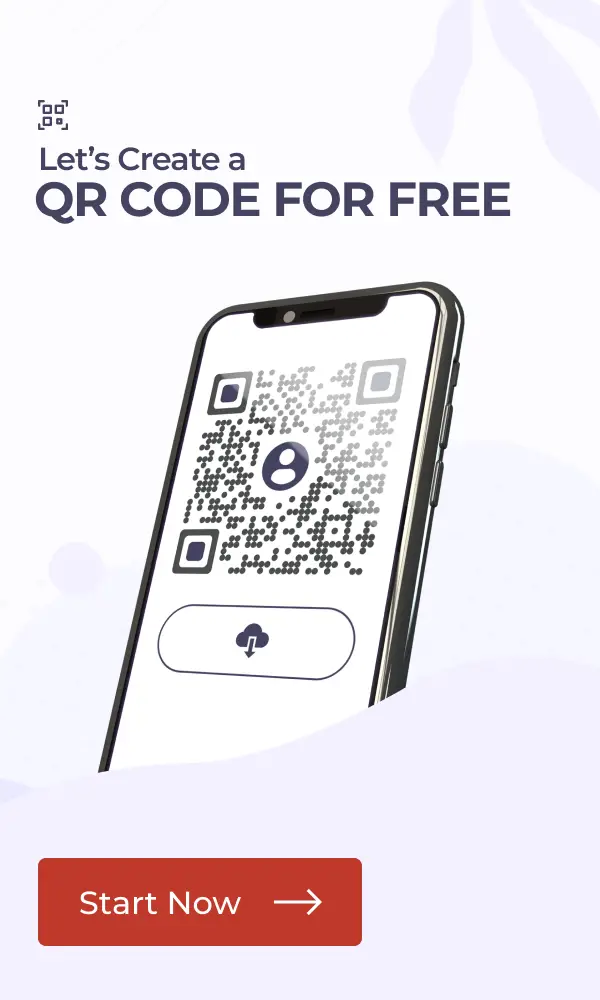QR Codes now offer such robust features that they are changing how we relate to information, products, and services in our daily lives.
The United States is usually the biggest market for any industry. This is also the case with QR Codes. But how many people can scan a USA QR Code?
According to a study by MarketerIntelligence, the number of US smartphone users scanning a QR Code stood at 52.6 million users before COVID-19.
The United States has shown remarkable growth in recent years. An expected 89 million Americans scanned a QR Code on their mobile device in 2022, according to Statista.
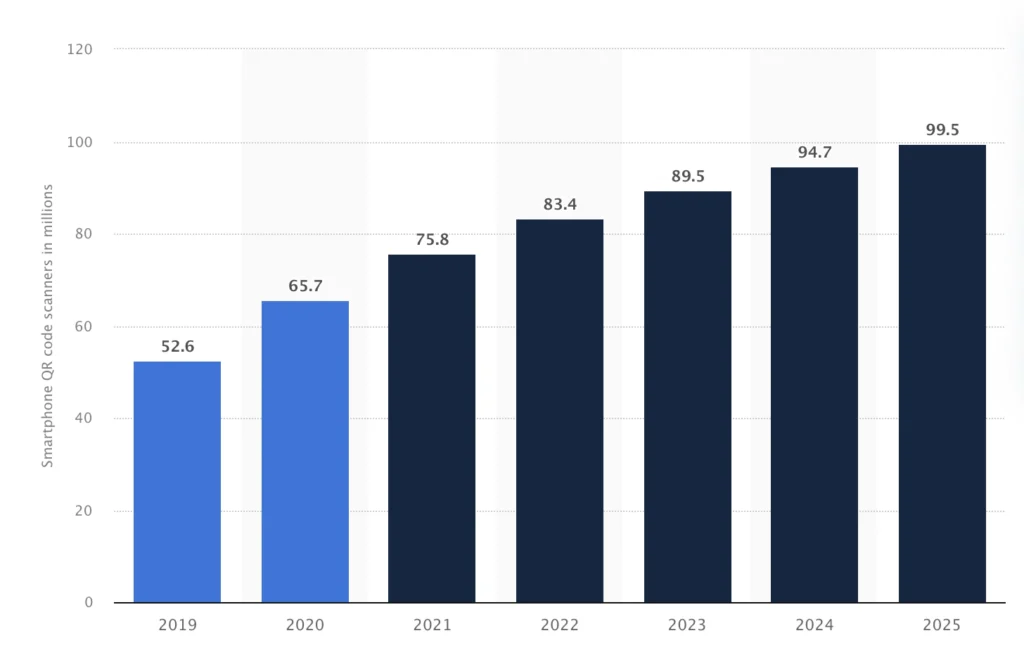
QR Codes are getting really popular in the US. Soon, over 100 million people will be using them!
That’s a huge jump from just a few years ago when only a few million people were using them.
On the other hand, QR Code scanners weren’t built into most smartphones until 2017, when Apple finally included them in iOS 11. The USA was almost fifteen years behind the Japanese, who had begun using QR Codes as early as 2002.
This increase in smartphone and mobile internet penetration is pushing print marketers to use technologies such as QR Codes to engage the new tech-savvy audience.
Compared to their traditional counterparts, QR Codes offer several benefits, which is the reason for their growth. Without additional technology, they can be scanned with camera-capable devices like smartphones.
A. Benefits of using QR Codes in America
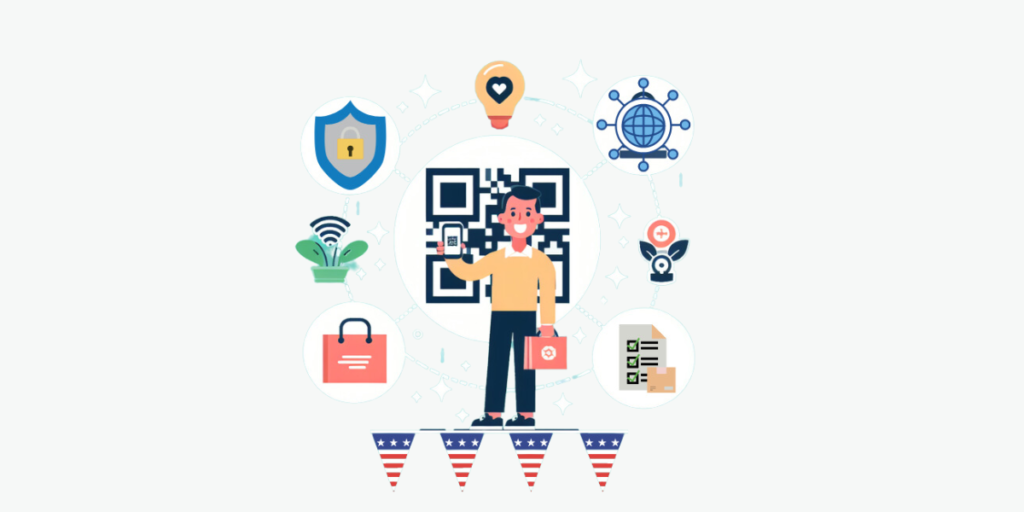
While the number of customers using QR Codes in the USA continuously rises, retailers are still totally committed to their success.
After all, they stand to gain a variety of advantages, such as:
- Lower operating expenses since retailers won’t require as many point-of-sale (POS) terminals and maybe less personnel.
- Enhanced accessibility, since the majority of Americans own smartphones with built-in QR Code readers;
- Greater convenience since a single smartphone may enable a QR-based payment system;
- Better safety, since USA QR Codes encourage customers to make touchless purchases.
- Enhanced speed, as QR Code payments are among the quickest alternative payment methods and have seen rapid growth in America;
- Strengthened security, as QR Codes offer previously unheard-of levels of encryption
USA QR Codes also offer flexible sizes and error-correction capabilities, which can be scanned from any angle.
They provide a convenient way for American businesses and customers to access information quickly and securely.
B. Industry-wise use cases of QR Codes in the United States
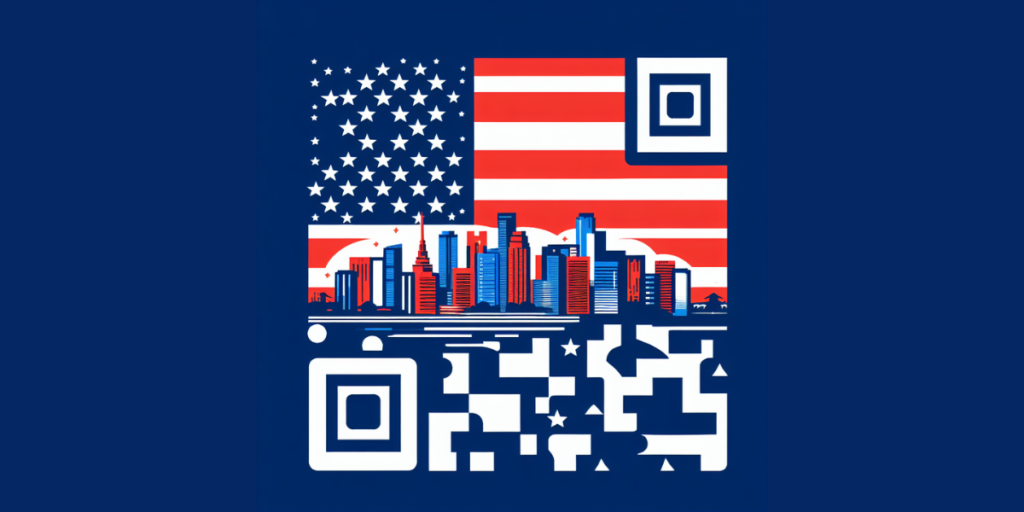
1. Marketing
In a survey of US shoppers conducted in June 2021, 45 percent of respondents reported using a USA QR Code to access marketing or promotional offers.
Customers rely on internet research before making big purchases. Statistics show that:
- Google now processes over 40,000 search queries every second on average, which is over 8.5 billion searches per day;
- Google is visited 89.3 billion times a month;
- More than 27% of Google Desktop traffic comes from the USA.
- In 2021, the US recorded 27.01 percent, the highest Google traffic as of June 2021 by country basis.
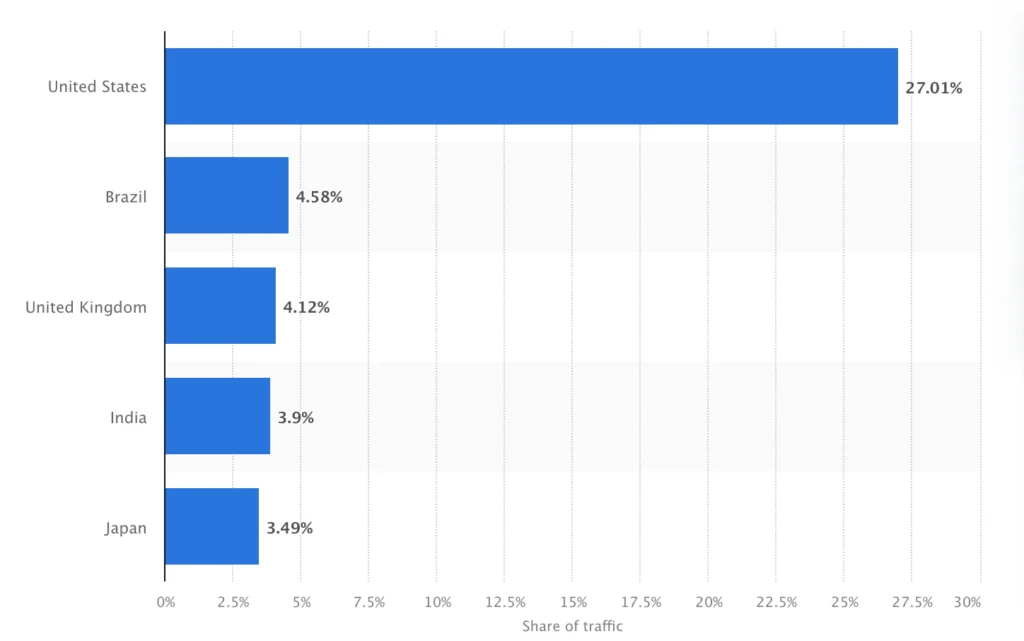
So marketers are becoming transparent and sharing information with their customers. However, this becomes difficult with print media due to limited space. This is where USA QR Codes become relevant.
QR Codes are great for business administration and management, they bridge the gap between print media and online content allowing marketers to further engage with their target audience.
I. To share information
Billions of dollars are being spent on advertising during presidential elections and political campaigns, employing various marketing strategies in an attempt to increase the number of votes.
These campaigns involve a wide range of activities, such as gathering voter data, identifying potential voters, and figuring out what issues they care about.
A range of official virtual yard signs for use on islands in Animal Crossing: New Horizons, a Nintendo Switch game, is being released by Joe Biden’s presidential campaign. This is to promote their portfolio/party-manifesto and connect better with their voters before the election.
The mug shot of Donald J. Trump appeared destined to become a symbol of this turbulent, historic period in American history when he entered a Georgia courtroom on August 24, 2023.
But Mr. Trump and his group saw the mug photo differently. They used the image and everything it stands for as a major part of their fund-raising, splashing it across mugs, T-shirts, and posters in their campaign store almost instantly.
Their campaign pushed posters that have QR Codes on them which, when scanned lead to Donald Trump’s official website.
A cybersecurity certification and labeling program was unveiled by the Biden-Harris administration to make it easier for Americans to select smart gadgets that are safer and less susceptible to intrusions.
In order to give consumers detailed and comparable security information about these smart gadgets, the FCC plans to employ a USA QR Code that links to a national registry of certified devices.
Back in Nov 2016, the then president, Barack Obama, signed a federal law that requires food manufacturers to share Genetically Modified (GM) ingredients via a label, a QR Code, or a toll-free phone number. These USA QR Codes would lead customers to detailed Genetically Modified Organisms (GMO) disclaimers.
In late 2015, US food, beverage, and consumer companies initiated the launch of SmartLabel QR Codes. This allowed transparency between manufacturers and consumers. Users could scan the QR Code to view nutrition, ingredients, allergens, and other information such as certifications of the product.
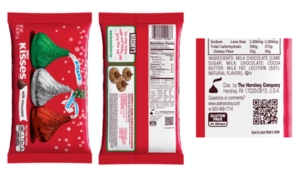
In 2013, fast food chain McDonald’s added QR Codes to their packaging in the US. From carry-out bags to drinking cups, all featured a QR Code. When scanned, the USA QR Code displayed the nutritional information of the purchased food item.
II. For deals and discounts
While many consumers still like to receive their coupons in paper and via mail, the majority of them now shop online in search of the best offers.
About two out of every ten American customers use coupon and deal websites as inspiration when making new product purchases, with social media receiving an even higher percentage of exposure.
Over 19 million American social media users followed coupon and rebate sites on Facebook, Instagram, TikTok, X (formerly Twitter), and other platforms as of December 2022.
The adoption of USA QR Codes for the promotion of deals and offer discounts has accelerated these trends throughout America.
In addition, the rate of inflation in the United States reached a peak in 2022 for the first time in almost 40 years, and it stayed above average throughout 2023.
Under these circumstances, it is no wonder the U.S.A. is expecting a massive surge in USA QR Code usage.
The Fetch: QR Codes are the future, use them and save money.
Back in 2016, the United States Postal Service (USPS) held a mobile shopping promotion campaign.
Mailers could avail of discounts by adding QR Codes to standard mail. This included large envelopes, newsletters, and magazines. Scanning the USA QR Codes allowed users to make purchases online and avail discounts.
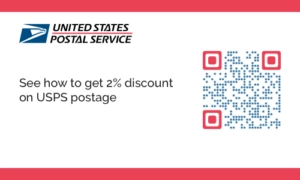
By 2018, the number of households that obtained coupons via QR Codes in the US reached 3.27 million. It is expected to touch the 3.45 million mark by 2020, as per the Global Consumer Survey, Statistia.
III. For product promotion
In 2021, during the Super Bowl LVI, Pepsi made effective use of USA QR Codes. In the end, they played a commercial with a QR Code that invited viewers to scan to access the exclusive Show app for sharing augmented reality photos.
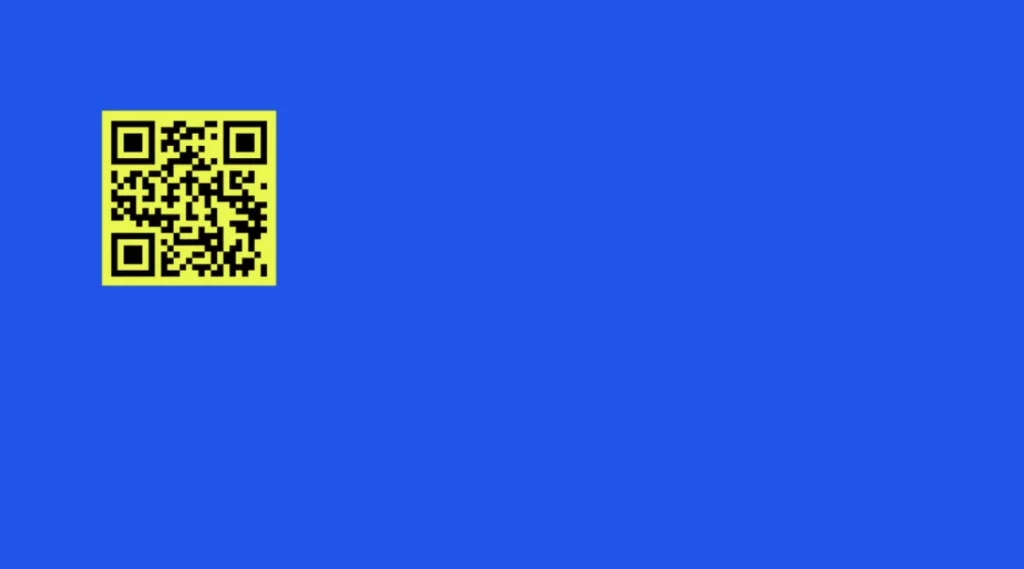
Source: Coinbase’s $7 million ad-campaign (it was just a floating QR Code and nothing else, crazy right?)
By utilizing a clear call-to-action (CTA) and offering a particular incentive to individuals who scanned the code, Pepsi was able to connect with its audience in a novel and captivating way.
This not only created interest in their products but also provided them with the chance to gather crucial data regarding the preferences and behaviors of their target market.
A further instance of Pepsi’s effective use of USA QR Codes was during its partnership with Beyoncé. The popular singer released a line of limited-edition cans featuring her picture coupled with QR Codes that led fans to behind-the-scenes content and sneak peeks at her music videos.
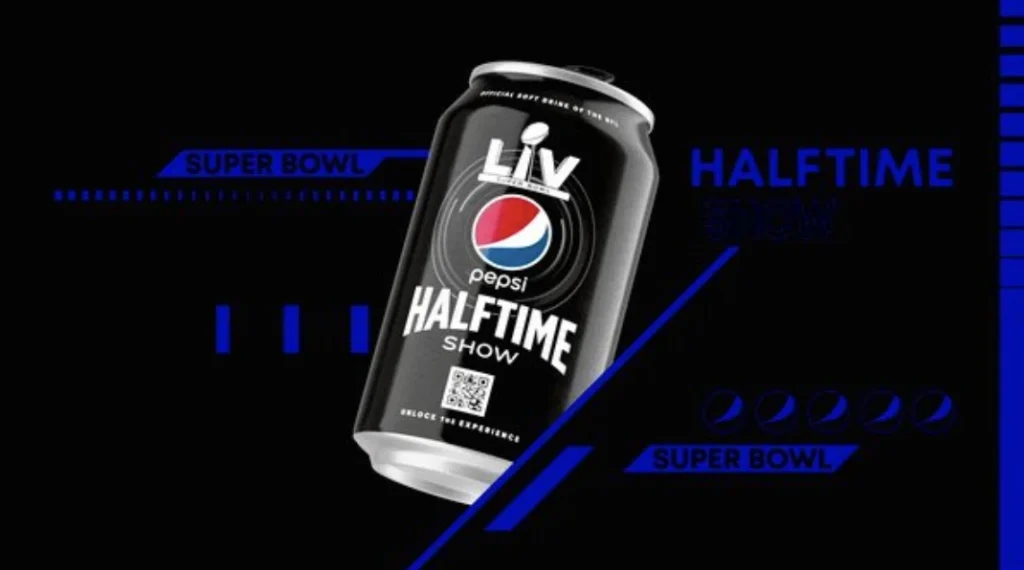
In 2018, Amazon rolled out its own branded USA QR Codes named SmileCodes.
Amazon tested the codes in pop-up shops and at Amazon Lockers in Europe before their debut in the US through magazines including Cosmopolitan and Seventeen.
Through the use of SmileCodes, mobile shoppers could scan codes they saw to trigger Amazon deals. For example, you may encounter a SmileCode at an Amazon locker, which provides you with a secure code to open the locker.
Back in 2011, Victoria’s Secret (VS) launched a USA QR Code campaign titled “Sexier than Skin”. The campaign gained quite a few eyeballs for being quirky and creative. The ads featured QR Codes on VS’ fashion models and encouraged viewers to scan the code to reveal the model’s secret. The secret is, the VS’ latest collection.
In April 2024, Hollywood sensation Taylor Swift did something out of the way that amazed everyone. She released a QR Code mural drawing crowds’ anticipation of her upcoming album, ‘Tortured Poets’ release.
Let’s analyze this amazing QR Code campaign. So, on April 16, these USA QR codes started appearing in major cities worldwide.
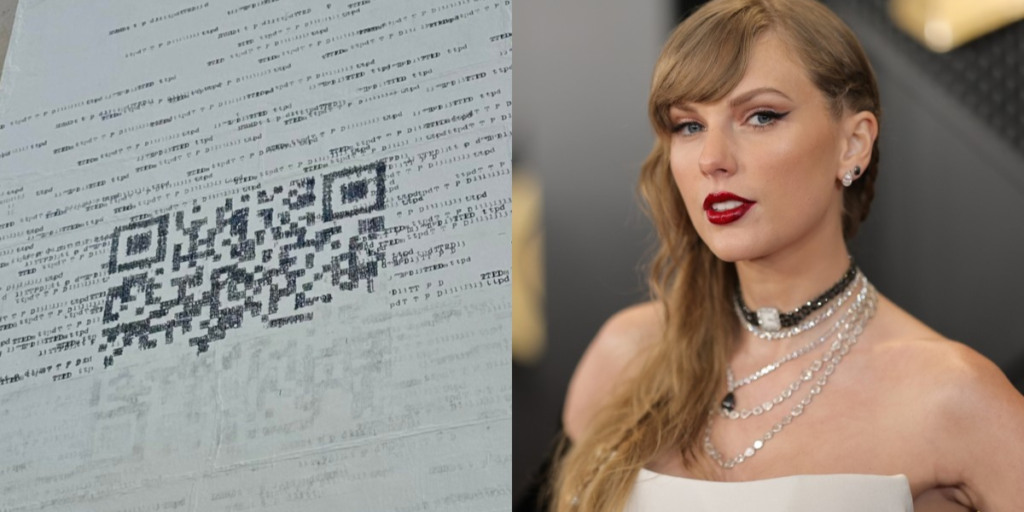
These codes were clearly linked to The Tortured Poets Department, a studio album by Taylor Swift (TTPD), with their backgrounds covered in “TTPD” and “13,” which reminded fans of the repeated “Taylor Swift” text on the Reputation album cover.
When people scanned the codes, they were taken to an “Error 321” page on YouTube Shorts.
But on April 17, something changed. Scanning the codes no longer showed the error message. Instead, fans saw a typewriter that typed out a single letter. At first, everyone was puzzled—what were they supposed to do with just one letter?
But as more QR Codes were scanned in other cities, fans started to realize this was another one of Swift’s clever tricks, possibly spelling out a word related to a music video or maybe even a bonus track on TTPD.
Rest assured, this campaign highlights how QR Codes are being used in the USA for awesome marketing campaigns.
Another notable example is McDonald’s. In a LinkedIn post, Guillaume Huin, Sr. Marketing Director at McDonald’s, shared some exciting news: “On February 26th, McDonald’s becomes WcDonald’s, as an homage to the name used for decades in mangas and anime to refer to McD.”
To honor the art of manga and anime, McDonald’s partnered with the legendary Japanese animation Studio Pierrot (known for Bleach and Naruto) and the talented manga artist Acky Bright to create four mini-episodes and short mangas. These will be released once a week.
Fans can unlock these mangas by scanning a QR Code found on the packaging or in select manga stores across the US.
Huin expressed his excitement about the campaign: “This campaign is another example of the brand’s commitment to ‘share the pen’ with fans and celebrate the cultures we’ve been a part of organically. I cannot wait to see the anime world take over our 13,500 stores.”
We’ve all heard of WWE, right? Well, on the April 15 episode of Raw, WWE continued to drop hints in what many believe is leading up to the return of Uncle Howdy (Taylor Rotunda, formerly known as Bo Dallas) — possibly along with others who were close to the late Bray Wyatt, like Alexa Bliss, Braun Strowman, and maybe even Erick Rowan.
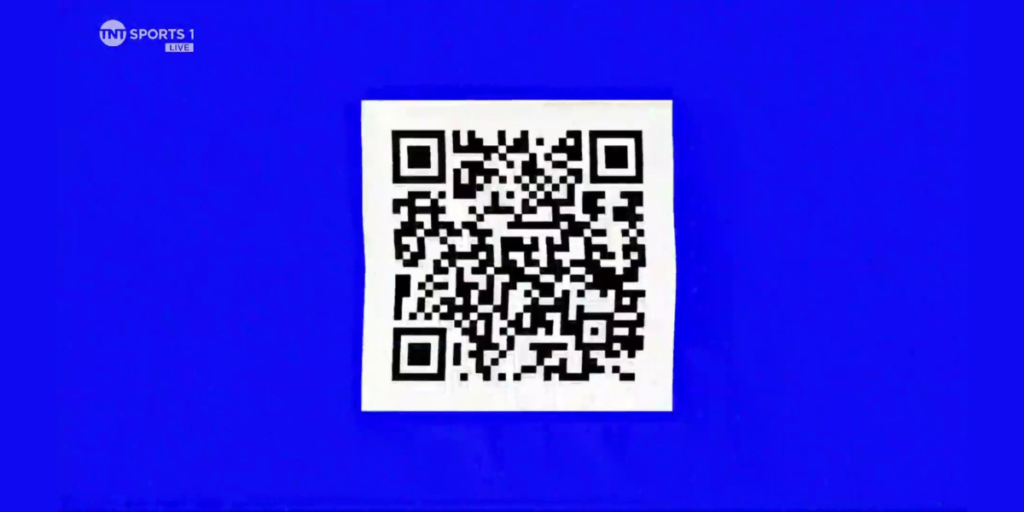
The latest clue appeared through a USA QR Code that flashed on the screen, a technique WWE previously used during the “White Rabbit Project” that preceded Wyatt’s 2022 comeback. Fans who are deeply involved in what we’re now calling the “Nightbird project” (find out why here) took it from there and uncovered some interesting details.
2. Retail
Retail contributes to an estimated two-thirds of the US gross domestic product (GDP). For an industry this big, it is important to be well aware of trends to keep their audience engaged. USA QR Codes in retail have made customer engagement easier.
McDonald’s, a world leader in fast food, has always been at the forefront of applying innovative marketing strategies. One approach they employed effectively in their digital marketing initiatives was the usage of USA QR Codes.
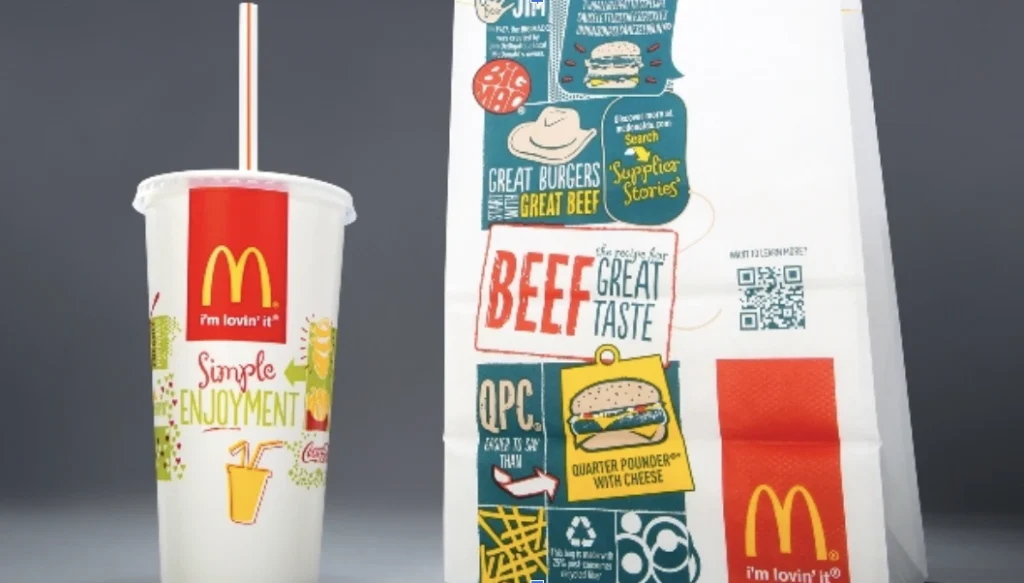
McDonald’s used QR Codes as part of its marketing strategy on its packaging. By just scanning the code, customers might receive exclusive deals, discounts, and information on brand-new menu items. This elevated customer participation to a whole new level and added excitement to the dining experience.
Starbucks is a well-known global coffee brand with a reputation for employing cutting-edge marketing strategies.
Their loyalty program in the US was a great way to use USA QR Codes. By simply scanning the code, customers obtained rewards and discounts on their next transactions. This smooth connection allowed customers to engage with the brand and benefit from additional offers.
To give customers a more personalized experience, they also employed QR Codes in-store. Consumers could obtain comprehensive information about different coffee blends by scanning the QR Code put next to each product.
Launched in 2016, Amazon Go is the first-ever walk-in-walk-out convenience store. The store located in Seattle, Washington allows shoppers to enter the store by scanning a USA QR Code. The store uses the Just-walk-out technology. This deducts the amount of the purchase from the customer’s Amazon wallet.
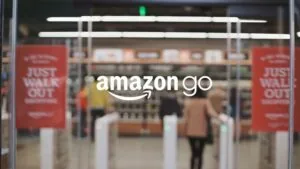
Split Bread restaurant, San Francisco has a QR Code placed on each table. Guests can scan the QR Code to view the menu and place their order. Besides this, guests can also make payments for their meals via this QR Code.
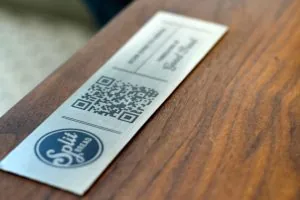
3. Social-media
After China and India, the United States had the third-largest global social media readership as of 2022. With over 91 percent of Americans using at least one social media platform, the country is home to over 302 million social media users.
Social media is one of the fastest-growing mediums for businesses to engage with their target audience. The addition of QR Codes has only made it easier.
Instagram started rolling out a QR Code feature back in August 2022, which users can now find throughout the app—from the Explore page to the feed. All users—including business and creator accounts—can utilize the enhanced QR Code capability as of September 2022.
Several other apps, such as Spotify, Facebook, Snapchat, Twitter, and Facebook, use their QR-like scheme. Out of all these platforms, only Twitter is compatible with real QR Codes. Others use a modified version of QRs.
With the inception of this technology in Nov 2016, Twitter launched ‘Twitter QR Codes’. Users could generate a unique QR Code for their profile via the Twitter app on their smartphone. Scanning the QR Code of a fellow Twitter user allowed users to follow them.

In April 2016, Facebook added customized QR Codes to the Messenger app. Each user could create a unique QR Code for their profile. Users could add friends to their Messenger list by scanning the QR Code on the Messenger app.
Back in 2015, Snapchat launched Snapcodes (also known as Snaptags). Snapcodes are nothing but customized QR Codes. Scanning the Snapcodes allowed users to add friends on Snapchat.
When developed, The QR Code reader on Snapchat could only read Snapcodes. In 2016, Snapchat added an inbuilt QR Code reader that can read standard QR Codes as well.
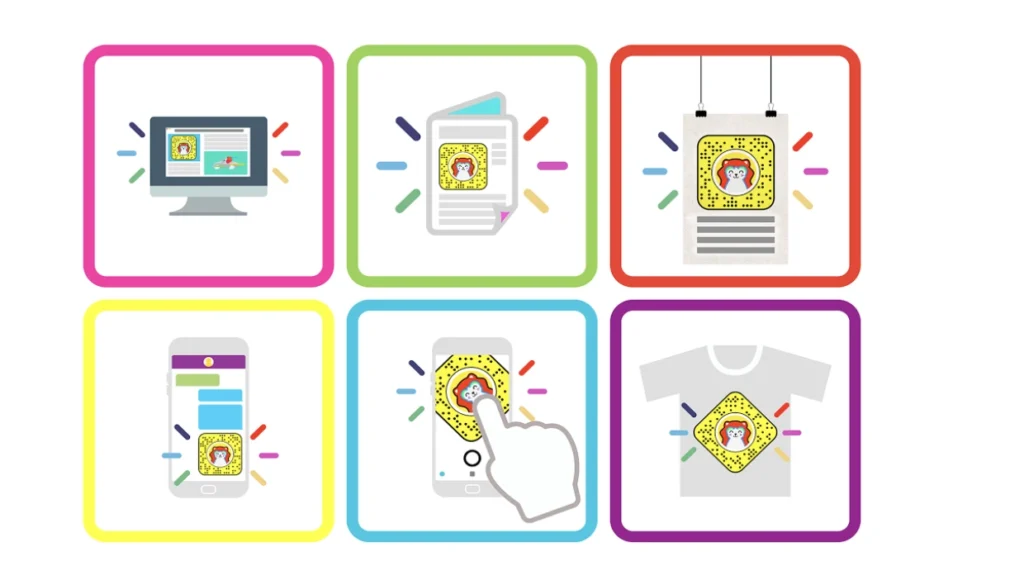
4. Education
Teaching methods have evolved over the years. Projectors and smartboards have taken the place of blackboards.
Students use laptops and smartphones to take notes. With changing times, how can teachers make classes more interactive? The answer is QR Codes.
In 2021, the Westford school system introduced QR Codes that were placed in various locations across school buildings as a new method for employees and students to report civil rights violations.

When they believe there have been civil rights abuses, faculty, staff, and students can file complaints using new forms or USA QR Codes found in school facilities.
The Misericordia University, Pennsylvania, US is using USA QR Codes in their Newspaper, The Highlander.
If you visit campuses of big universities like Harvard, Stanford, Massachusetts, etc you’ll find that all these educational; institutions have started adopting the use of QR Codes.
From streamlining the admissions process to browsing through campus library catalogs you’ll see that USA QR Codes have not only made the whole onboarding process easier for the authorities but have also created an atmosphere of interactive teaching and learning.
Students can now access important resource materials and notes with just a scan. Student ID cards now have better security because of QRs.
“Students are so tech-savvy nowadays that I believe it’s important to tap into that interest.”
-Professor Steven, Division of Continuing Education, Harvard University.
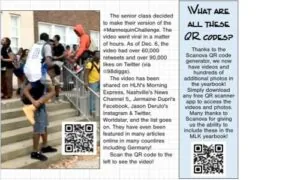
In early 2017, Martin Luther King Jr. Magnet School in Nashville, Tennessee added QR Codes to their yearbook. These USA QR Codes are linked to pictures and videos from various events in the school. A brainchild of teacher Lisa Connor, QR Codes in the yearbook makes it more engaging and interactive.
In 2016, ed tech company, Clever developed Clever Badges. Clever Badges are QR Code tags that allow children in school to log into their system without any trouble. These QR Codes currently help more than 5,000 children and allow access to over 200 educational apps.
Professor Al Trujillo of Palomar College, California uses QR Codes in lessons. The QR Codes in the books link to videos and pictures related to the topic at hand.
There is a QR code in the text that links to a video showing how oceanographic equipment that got stuck on the seafloor in an active lava flow was later retrieved. So now, instead of students just reading the story and seeing a static picture, they get to view a video and hear me describe the recovery of the equipment
Professor Al Trujillo, Palomar College.
5. Payments
Approximately 80% of Americans own a debit card. With card payments, online security is a concern. Theft of credit/debit card information is commonplace. To address this challenge, banks now allow cardless transactions via USA QR Codes, which is convenient and secure.
These days, QR Codes are growing in popularity in the United States. According to Mercator’s research, only 13% of customers used QR Codes on their cellphones before the epidemic, but 11% more have done so subsequently.
Furthermore, 34% of those who were previously using this payment method said they had increased their usage since COVID-19 started.
Businesses that accept USA QR Code payments stand to benefit greatly.
“The most immediate benefit is the ability to accept new payment methods,” said Kia Lee, VP of Strategy & Development at InComm.
Customers can use apps offered by numerous organizations, such as PayPal and AliPay, to make transactions using QR Codes. The ability to accept USA QR Code payment allows businesses to transact with a larger client base.
Big brands like H&M’s Pay Later, Dunkin Donuts’ new payment app with DD Perks, and Starbucks Mobile Payment, have already adopted cashless QR-based payment alternatives with these dedicated apps.
One of America’s leading retail stores, Target launched its own payment app in 2018. Using the app, users can make payments at Target stores via QR Codes.
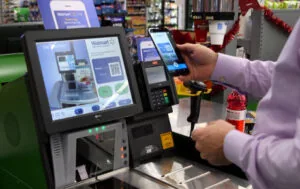
Back in 2015, Walmart launched a mobile payment app, Walmart Pay. Users will need to log in to their Walmart Pay app and scan the QR Code shared by the cashier to make a payment. After making the payment, the user will receive an e-receipt on their mobile phone.
As the QR Codes have seen a surge, the use of these QRs is visible across various brands with more streamlined payment apps.
In the United States, PayPal, one of the leading e-wallets across the globe adopted QR Code payments way back in 2014. To make a payment, the user has to generate a QR Code on the PayPal app on their smartphone. The retailer can scan the QR Code to receive the payment.
6. Parks and tourism
People these days prefer staying indoors with their gadgets rather than taking a stroll in a park. City administrations are adding QR Codes to parks to get the millennials outdoors. Adding QR Codes to parks makes them more engaging and interactive.
In Springfield, Ohio, Vietnam war veteran, Randy Ark is set to add QR Codes to the city’s memorial park. Randy has collaborated with Dodds Monuments of Springfield to execute this initiative. The QR Codes will allow visitors to learn more about what the monument memorializes. Visitors will also get a chance to know more about the fallen heroes and veterans.
I control all of the codes from my computer. Also, I added pictures of all the people in the Purple Heart chapter and added pictures people gave me, and notes to scan anything. I even put info for veterans to connect to other veterans.
Randy Ark.
In 2010, The World Park organized a tour of the Central Park in New York. QR Codes were put up at different locations across Central Park. Scanning the USA QR Code allowed visitors to read lesser-known facts about the famous park.
7. Gaming
Games by themselves are quite interactive. To make games even more interactive, companies added USA QR Codes.
The endorsement of QR Codes by the Biden-Harris administration to connect with the audience through Animal Crossing: New Horizons, a Nintendo Switch game is well known to the gaming community.
Bandai Namco Games America launched its latest game, Digimon World: Next Order, in Jan 2017. The gaming company also announced a QR Code campaign. Players can earn prizes by gathering QR Codes.
In Jan 2017, Nintendo added QR Codes to their My Nintendo page. The QR Codes, when scanned at the company’s events could earn players extra benefits.
Launched in July 2016, Pokemon Go took the world by storm. Its latest addition is Sun and Moon QR Codes. The game has added a QR Code scanner. Players can scan their QR Codes and get to the location to find a Pokemon. Besides helping the player locate a Pokemon, the QR Code also helps the player categorize them.
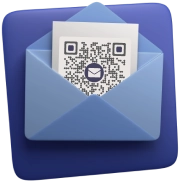

C. The future of QR Codes in America
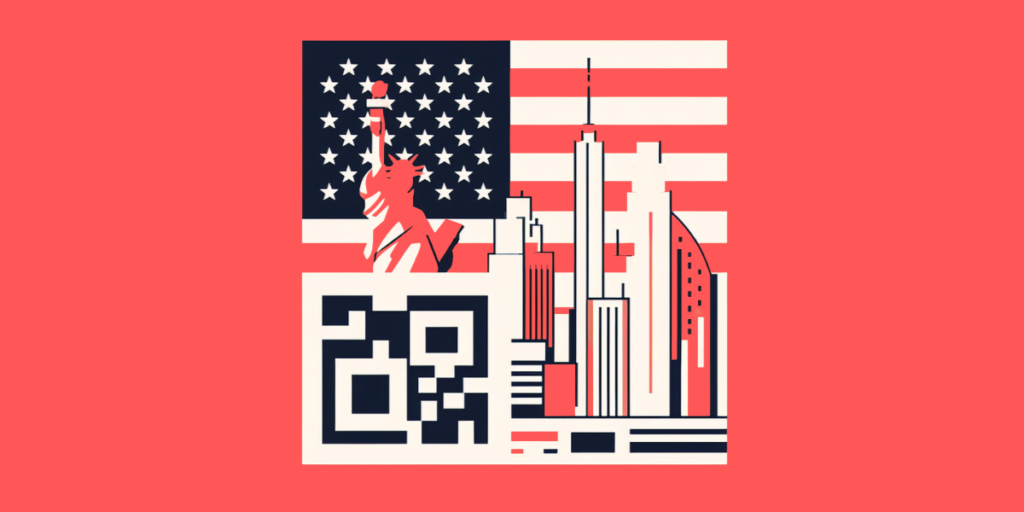
As technology continues to evolve, so does the role of QR Codes in American society. With innovations such as dynamic QR Codes, which can be edited or updated after creation, and the integration of QR Codes into augmented reality (AR) experiences, the possibilities are expanding.
As businesses and consumers become more accustomed to the convenience and versatility of QR Codes, their role in shaping the digital landscape is set to grow further.
Ads depending on how close customers are to a particular area are targeted to potential customers using proximity marketing. Certain brands of high-tech sneakers like PUMA provide AR experiences right on the shoe.
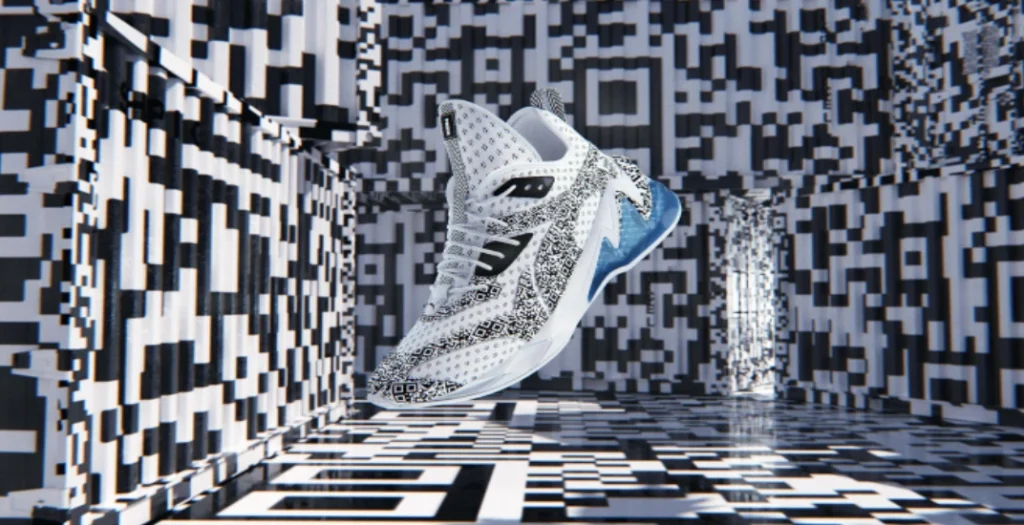
It is possible to scan the unique QR shoe design to access several augmented reality filters. Game stuff on the app is more entertaining.
D. Choose Scanova!
Looking for a secure option for QR Code generation? Look no further than Scanova!
Scanova offers many different QR Codes for all kinds of needs, from simple links to fancy pages with forms.
You can even make your QR Code look amazing with your own logo or design.
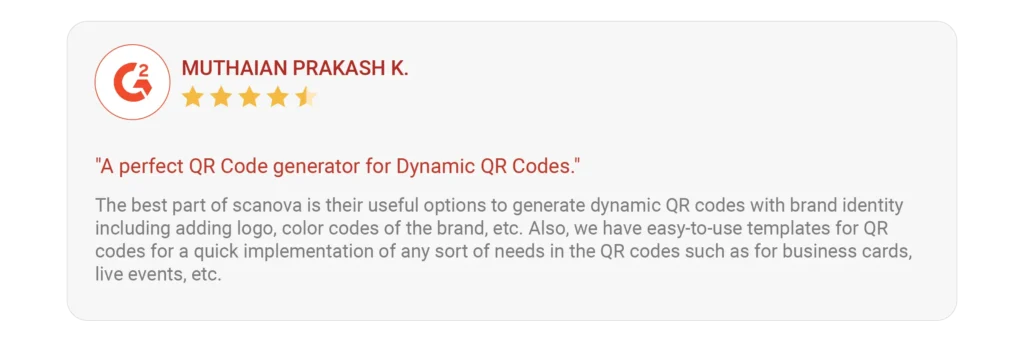
Want to know how your QR Code is doing? Scanova tracks everything, like where and when people scan it. This helps you see what works and what doesn’t.

Your data is safe with Scanova. They follow strict rules to protect your customer information.

Anyone can use Scanova. It’s easy to use, even if you don’t know tech stuff. Plus, it’s affordable and has a free trial.
With Scanova, your QR Code campaigns will be a hit!

E. FAQs: USA QR Code
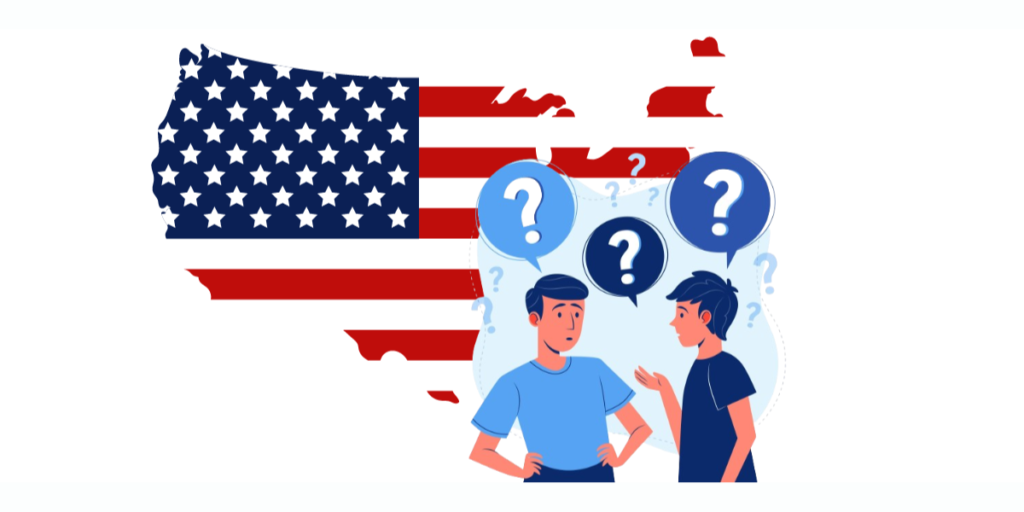
1. What is a QR Code?
A QR Code, or Quick Response code, is a two-dimensional barcode that can store various types of information. QR Codes are commonly used to provide quick access to websites, information, or services.
2. How do I scan a QR Code in the USA?
To scan a QR Code in the USA, you can use the camera on your smartphone or a dedicated QR Code scanning app. Most modern smartphones have built-in QR Code readers that can be activated through the camera app.
3. What types of information can QR Codes in the USA contain?
QR Codes can store a variety of information, including website URLs, contact information, Wi-Fi network details, payment information, and more. The type of information depends on the purpose for which the QR Code was created.
4. Are QR Codes secure to use in America?
QR Codes themselves are not inherently secure or insecure. The security depends on the content the QR Code directs you to.
It’s essential to be cautious and only scan QR Codes from trusted sources to avoid potential security risks.
5. How are QR Codes used in the USA for payments?
QR Codes are widely used in the USA for mobile payments. Payment apps generate USA QR Codes that contain transaction details, allowing users to make payments by scanning the code with their smartphones.
Popular payment services like Apple Pay, Google Pay, and various banking apps utilize QR Codes for seamless transactions.
6. Can businesses in the USA use QR Codes for marketing?
Yes, businesses in the USA often use QR Codes for marketing purposes. They can be incorporated into print materials, advertisements, or product packaging to provide consumers with easy access to additional information, promotional offers, or online content.
7. Do I need a special app to generate USA QR Codes in the USA?
There are various online tools and mobile apps available that allow users to create QR Codes easily. Many of them are free and user-friendly. You can generate QR Codes for websites, contact information, Wi-Fi networks, and more using tools like Scanova.
8. Are QR Codes used because of COVID-19 in the USA?
Yes, during the COVID-19 pandemic, QR Codes were widely used in the USA for contact tracing purposes.
Businesses, restaurants, and public venues implemented QR Code-based systems to facilitate contactless check-ins and record visitor information for potential contact tracing efforts.
9. Can QR Codes in the USA be customized with logos or colors?
Yes, many QR Code generators allow users to customize QR Codes by adding logos, colors, and other design elements.
However, it’s essential to ensure that the customization does not interfere with the QR Code’s functionality or scannability.
Conclusion
QR Codes have transcended their initial novelty and have become an integral part of everyday life in America.
From facilitating contactless transactions to enhancing marketing strategies and improving educational experiences, the evolution of USA QR Codes reflects their adaptability and utility.
As technology continues to advance, QR Codes are likely to play an even more prominent role, connecting the physical and digital worlds in innovative ways.
